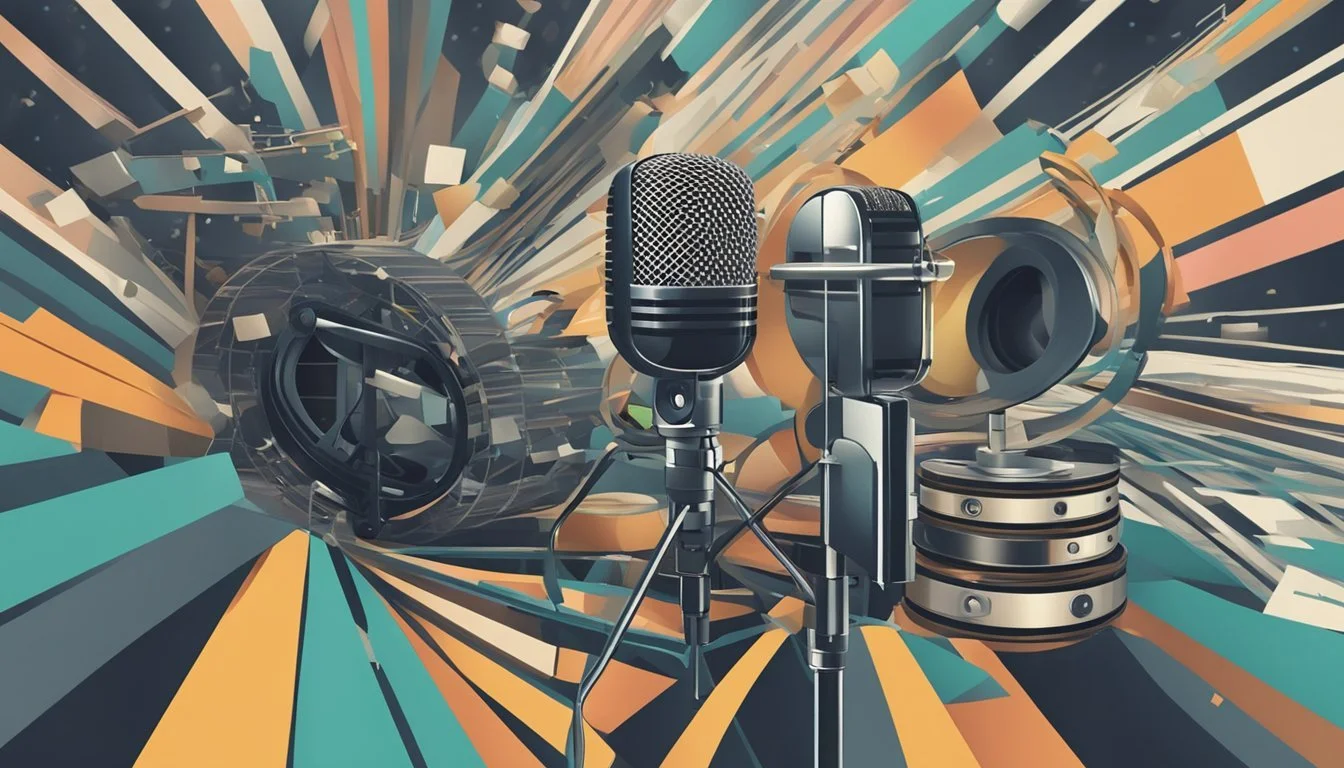Unlock the Secret: Master 'Documentary' Pronunciation and Sound Like a Pro!
Pronouncing "documentary" correctly can be a challenge for many English speakers. The word has multiple syllables and some tricky vowel sounds that vary between British and American accents. In American English, it's typically pronounced as "dock-yuh-men-tuh-ree" with the stress on the first syllable.
British pronunciation differs slightly, with more emphasis on the second syllable: "dok-yoo-MEN-tuh-ree". The subtle differences in vowel sounds and stress patterns between these two major English dialects contribute to the word's pronunciation complexity.
Learning the correct pronunciation of "documentary" is valuable for clear communication, especially in academic or professional settings where the term is frequently used. Mastering its pronunciation can enhance one's spoken English and prevent potential misunderstandings when discussing films, television programs, or other documentary-style content.
The Concept of a Documentary
Documentaries are non-fiction films that aim to inform, educate, and present real-life events or issues. They employ various techniques to capture and convey reality, often with a specific purpose or perspective.
Definition and Historical Context
A documentary is a film or television program that provides a factual record or report on a particular subject. The term originated in the 1920s, coined by Scottish filmmaker John Grierson. He defined it as "creative treatment of actuality." Documentaries evolved from early cinema, with pioneers like Robert Flaherty's "Nanook of the North" (1922) setting the stage for the genre.
Documentaries differ from fictional films by focusing on real people, events, and issues. They often use interviews, archival footage, and on-location shooting to present their subjects. The goal is typically to inform, persuade, or shed light on important topics.
Types of Documentaries
Documentaries come in various forms, each with unique approaches to storytelling and subject matter:
Expository: Uses narration to guide viewers through the topic
Observational: Captures events as they unfold, with minimal intervention
Participatory: Involves the filmmaker in the subject matter
Reflexive: Explores the filmmaking process itself
Performative: Emphasizes subjective experiences and emotions
TV documentaries often focus on nature, history, or current affairs. They may be serialized or presented as one-off specials. Some documentaries take an investigative approach, uncovering hidden truths or exploring complex issues in depth.
Pronunciation Essentials
The word "documentary" has distinct pronunciation patterns across different English-speaking regions. Its plural form also requires attention to ensure correct usage.
Pronunciation Differences by Region
In British English, "documentary" is typically pronounced as "dok-yuh-MEN-tuh-ree" with emphasis on the third syllable. The first syllable sounds like "dock" and the second like "yuh." American English speakers often say "dah-kyuh-MEN-ter-ee," stressing the third syllable as well. The initial sound is closer to "dah" than "dock."
Regional variations exist within each country. Some British speakers may use a softer "t" sound, while certain American accents might slightly alter vowel sounds. The key difference lies in the first syllable pronunciation and the clarity of the "t" sound.
The Plural Form: Documentaries
The plural "documentaries" follows regular English pluralization rules. Add "-es" to the singular form. In British English, it's pronounced "dok-yuh-MEN-tuh-reez." American speakers say "dah-kyuh-MEN-ter-eez."
The stress remains on the third syllable in both singular and plural forms. The final syllable changes from "-ree" to "-reez" in plural. This shift is consistent across regional variations.
Listening and Learning
Improving documentary pronunciation requires active listening and engaging with audio resources. Focused practice with pronunciation guides can yield significant benefits for language learners.
Utilizing Audio Resources
Audio dictionaries offer valuable tools for mastering documentary pronunciation. Many online platforms provide clear recordings of native speakers saying the word. Learners can listen repeatedly, focusing on specific sounds and intonation patterns.
Some websites allow users to slow down pronunciations, making it easier to catch subtle phonetic details. Language learning apps often include gamified exercises to reinforce correct pronunciation through repetition and feedback.
Podcasts and YouTube videos about documentaries can expose learners to the word in various contexts. This helps internalize natural usage and accent variations.
Benefits of Audio Pronunciation Guides
Audio guides provide a consistent, accurate reference for documentary pronunciation. They help learners avoid developing incorrect habits that can be difficult to unlearn later.
Hearing the word spoken by different voices aids in recognizing it across various accents and speech patterns. This versatility is crucial for understanding documentaries from different regions.
Regular use of audio guides can improve overall listening skills and phonetic awareness. Learners become more attuned to the nuances of English pronunciation, benefiting their speaking abilities across all vocabulary.
Audio resources also allow for private practice, reducing anxiety about mispronunciation in public settings. This builds confidence for using the word in real-world conversations about films and media.
Pronunciation Techniques
Mastering documentary pronunciation requires specific techniques and practice. Focusing on phonetic elements and listening carefully to native speakers can greatly improve accuracy and fluency.
Phonetic Transcription and Practice
Phonetic transcription serves as a valuable tool for learning proper documentary pronunciation. The International Phonetic Alphabet (IPA) provides a standardized system for representing sounds. For "documentary," the IPA transcription is /ˌdɒkjuˈmentəri/ in British English and /ˌdɑːkjuˈmenteri/ in American English.
Breaking the word into syllables helps with pronunciation: doc-u-men-ta-ry. Stress falls on the third syllable. Practice each syllable separately, then combine them smoothly.
Listening to native speakers pronounce "documentary" is crucial. Many online dictionaries offer audio pronunciations. Repeating after these recordings helps train the ear and mouth to produce the correct sounds.
Mimicking stress patterns is key. In "documentary," the stress on "men" should be slightly stronger than the other syllables. This rhythm is essential for natural-sounding speech.
Verifying Pronunciation Accuracy
Accurate pronunciation of "documentary" is crucial for effective communication. Proper verification methods ensure clarity and precision in spoken language.
Role of Documentary Evidence
Documentary evidence plays a vital role in verifying pronunciation accuracy. Audio recordings from reputable sources provide reliable references for correct pronunciation. Native speaker samples, particularly from American and British English speakers, offer authentic examples.
Pronunciation guides in dictionaries serve as valuable documentary evidence. These guides use phonetic symbols to represent sounds precisely. Online dictionaries often include audio clips, allowing users to hear the word spoken aloud.
Linguistic research papers and academic studies on pronunciation patterns can also serve as documentary evidence. These sources offer in-depth analysis of regional variations and historical changes in pronunciation.
Video tutorials created by language experts demonstrate proper mouth and tongue positions for accurate pronunciation. These visual aids complement audio resources, providing a comprehensive approach to pronunciation verification.


